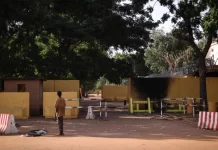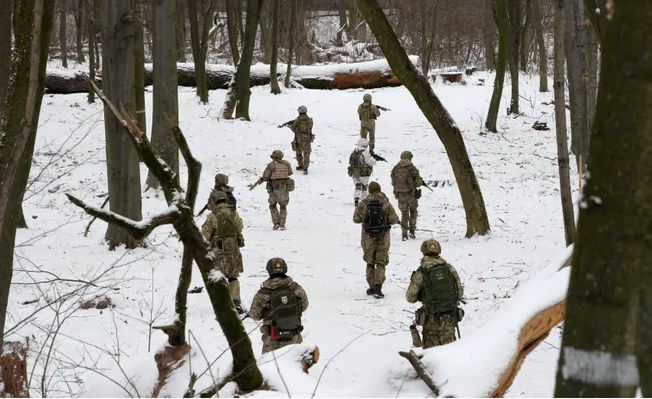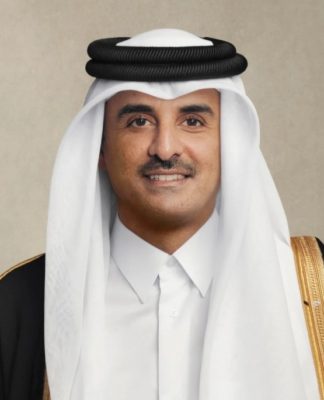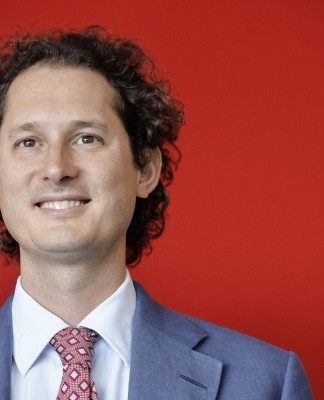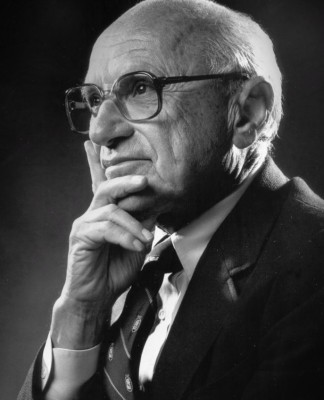Ukraine’s citizen-soldiers train to fight in case of Russian invasion
Issued on:

As tensions continue on the border with Russia, Ukrainian electricians, nurses, lawyers and even priests are volunteering for the country’s Territorial Defence Forces, a civilian reserve intended to support the regular army in case of a Russian invasion. FRANCE 24 met some citizen-soldiers at one of their bases in Kharkiv, 40 kilometres from the border.
“Don’t aim for the head, aim for the crotch. That way, you’re sure to hit your target even if it ducks at the last minute,” an Ukrainian instructor tells a small group of recruits dressed in camouflage clothing.
Kalashnikovs in hand, the volunteers have been learning how to move in small groups without entering their comrades line of fire. For these Ukrainian Territorial Defence Forces reservists from Kharkiv, the enemy they’re targeting is the tens of thousands of Russian soldiers massed just on the other side of the border.
Many of these volunteers might have answered the calls on billboards to join this Ukrainian army brigade; the signs were posted all around this city of 1.5 million inhabitants in north-eastern Ukraine. Nearly a hundred recruits gathered on Saturday, January 29 in an empty school to take lessons on the basics of army life: handling weapons, orientation, operational movements, theory on explosives… Every Saturday, a team holds training sessions.

“War with Russia is quite possible because it is a country where a small number of people can decide of such things. The worst thing for me would be to find myself holed up in a shelter without knowing what to do,” Alexei Sus, a 36-year-old electrical engineer, told FRANCE 24. He has been enlisted in the Territorial Defence Forces for six months.
The young reservist spent nearly 10,000 hryvnias (about 313 euros) to buy his own equipment – uniform, first-aid kit, tactical vest, gas mask… and even a Geiger counter, which he takes out of his bag. He acquired it in 2014, shortly after war broke-out between loyalists and Russian-backed Donbass separatists. “We were in open conflict with a nuclear-armed army at the time and I wanted to be ready for any eventuality,” he said, proudly showing the small white box that measures the level of radioactivity in the air.
‘We hope we won’t have to put everything we learn here into practice’
The civilian-soldiers of the Territorial Defence all equip themselves at their own expenses. The old Kalashnikovs used for their training always remain at the base.
“The weapons would only be distributed in the event of an invasion. Meanwhile, with a permit, you can keep only a hunting weapon at home,” explains Alexei Sus. That’s not enough for him: the reservist has been saving up for his dream weapon: an US-made KelTec RFB 308 assault rifle.

Alexei is the typical Territorial Defence recruit: men who are full of patriotism and keen to be part of the defense effort, but unwilling to quit their jobs and civilian life to join the regular army. According to Sergeant Instructor Mikhail Sokolov, about 20 percent of the volunteers are women, but only a handful attended the training FRANCE 24 witnessed.
Alisa Bolotskaya is one of them, taking part in a moving exercise with a group in the school yard. The instructor urged the recruits to make quick, precise movements to raise their rifles in front of them, “until it becomes automatic”. The 52-year-old woman crept across a thin layer of snow, covered on her flank by another reservist in camouflage who happened to be her partner.

“I am a nurse during the day and for me, it is an obligation as a health worker to join the Territorial Defence Forces. I want to use my professional experience to save as many people as possible if the situation gets out of hand,” Alisa told FRANCE 24. “It is really unstable now, but we hope we won’t have to put everything we learn here into practice.”
An ‘army of partisans’?
There has been a considerable spike in the number of new recruits since early January, training sergeant Mikhail Sokolov explains. Although precise figures are not publicly available, the recruitment campaign is undoubtedly gaining momentum because of renewed tensions with Russia.
The Ukrainian government is openly accelerating the development of the Territorial Defence Forces with the goal of having as many as 130,000 reservists who could be stationed in the country’s 25 regions.

This open effort for recruitment from Kyiv has fuelled speculation that this would be an “army of partisans”, created to fight Russian forces in the advent of a military occupation of Ukraine. While some volunteers, such as Alexei Sus, indeed signed up for this reason, the Territorial Defence Forces’ training is far too basic to produce fighters with resistance skills.
“Here volunteers are given basic soldier training, which is not enough to fight behind enemy lines. Partisans would need to learn how to make explosives, hide their identities, or act as spies. This requires special psychological skills,” Oleg, one of the Kharkiv group’s instructors, told FRANCE 24.

The 45-year-old geologist, who has already been tested against Russian units in the Donbass conflict, estimates that about10 percent of the Territorial Defence Forces could effectively operate behind Russian lines.
But after training, nurse reservist Alisa Bolotskaya and her partner put those concerns aside for the evening: the couple changed from military clothing to their civilian outfits headed to Kharkiv’s circus, joining the long line of attendees. This was a premiere for a new show, “Waterland”: Is it enough to distract from the sabre-rattling at the border? At least until their next training session.

This story has been adapted from the original in French.








